Letters from Lodi
An insightful and objective look at viticulture and winemaking from the Lodi
Appellation and the growers and vintners behind these crafts. Told from the
perspective of multi-award winning wine journalist, Randy Caparoso.
Why you should celebrate National Zinfandel Day with Lodi grown Zinfandel
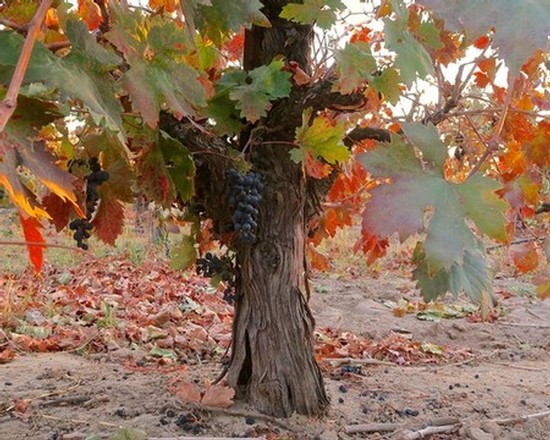
The second crop, early November Zinfandel in TruLux Vineyard on the west side of Lodi's Mokelumne River AVA
Today (November 20, 2019) is National Zinfandel Day!
We know, we know: there's a day for everything these days. But National Zinfandel Day holds significance in Lodi because:
• Zinfandel qualifies as California's heritage grape because, for most of the past century and a half, it has been the state's most widely planted wine grape (today, it is California's fourth most widely planted grape, behind Chardonnay, Cabernet Sauvignon, and Pinot noir).
• The Lodi AVA is easily California's largest grower of Zinfandel, crushing some 40% of the state's crop each year.
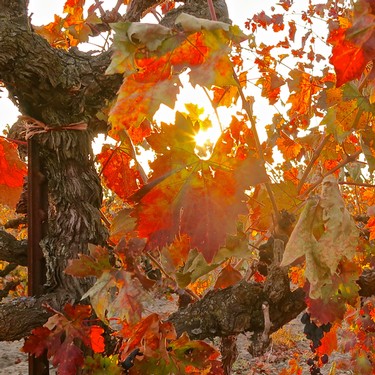
Late afternoon November light in the Mokelumne River-Lodi Zinfandel block
Naturally, here on lodiwine.com and related sites, we have devoted quite a bit of discussion to Zinfandel over the years. Among the highlights from just the past two years:
• Do Lodi Zinfandels age?
• How do Lodi Zinfandels compare to some of California's finest?
• What makes Lodi Zinfandel different
• Why ancient vines are so wise
• National Zinfandel Day Technical Workshop takes a keen, sobering look at the future of Lodi Zinfandel
But we can also boil it all down to three basic things, adding up to what makes Lodi-grown Zinfandel, in particular, something a little more special:
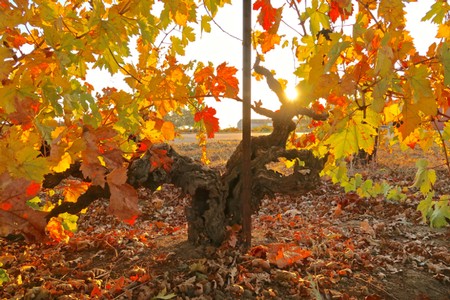
+90-year-old, own-rooted Zinfandel in Lodi's Clements Hills AVA
Value
You can't beat the value of Lodi Zinfandel. It helps that thousands of Lodi's Zinfandel acres are owned by families who have been farming in the region as far back as the 1850s. Consequently, they aren't incurring nearly the costs of what it takes to farm more recently developed real estate in places such as Napa Valley or Sonoma County. Plus there is the fact that other winegrowing regions have made such a commitment to the leading premium wine grapes (namely Cabernet Sauvignon, Chardonnay, and Pinot Noir), Zinfandel grown outside of Lodi has become a much rarer and more costly commodity. As a result, you have to pay $40 to $65 for a Napa or Sonoma Zinfandel to get the quality level you might get in an $18 to $35 Lodi-grown Zinfandel.
This is not to say that Napa or Sonoma-grown Zinfandels don't have their special attributes. If you love, say, the intense, sturdy, ultra-ripe taste of a Napa Valley Zinfandel, you have to buy a Napa Valley Zinfandel. But if you love the lush, gentle, refined, and perfumed taste of a Lodi Zinfandel, then you might as well enjoy the benefits of buying Zinfandels sourced from Lodi's many longtime growers. We're talking about, of course, terroir-related distinctions, which are a fact of wine life. The finest Napa and Sonoma Zinfandels are grown in Napa and Sonoma, and the finest Lodi Zinfandels are grown in Lodi. Vive la différence!
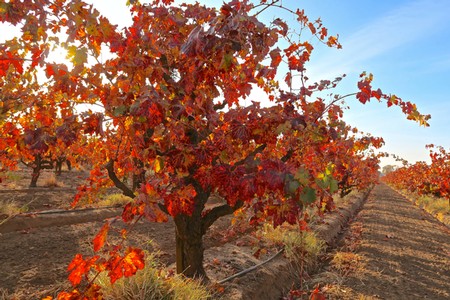
West side Mokelumne River-Lodi Zinfandel in early November 2019
Heritage
Many of Lodi's Zinfandels are sourced from vineyards with plants that have been lovingly cultivated for over 100 years, mostly as free-standing, spur-pruned "bushes" still growing on their own natural rootstocks. Heck, here in Lodi 50-year old vines are considered "young."
But why not just pull out these old guys and replant with younger, more productive vines, grafted to more vigorous rootstocks, or trained on more cost-efficient trellises? It certainly is possible, and it certainly has been done. All the same, pre-'60s, old to ancient vines in Lodi continue to be cultivated for the simple reason that they are considered truly more special in terms of both quality and sensory attributes by growers, winemakers, consumers, and the families who own them.
In Lodi, that is to say, heritage is a meaningful term; not an empty slogan, bandied about by marketing or advertising concerns. When you raise a glass of Lodi Zinfandel, you are raising a glass to Lodi's long, hard-fought history of heritage grape growing.
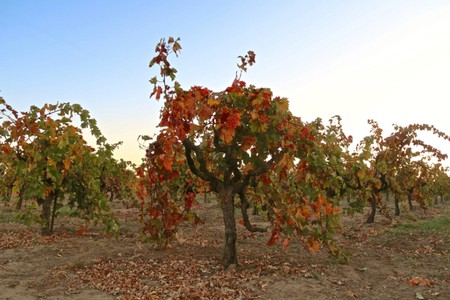
Gobelet trained (i.e. head trained, spur pruned) Zinfandel on Mokelumne River-Lodi's west side
Contemporary Style
This is the sensory difference, tied directly to Lodi's unique circumstances of largely sandy soils and mild Delta climate, marked by diurnal temperature swings not that much different than what you find in more coastal California regions. A Master Sommelier named Catherine Fallis has recently described this as Lodi's "secret"; telling us that "it is the long, gentle Mediterranean ripening season which allows sugars to rise leisurely, leaving an abundance of natural grape acidity which brings freshness and balance as well as longevity."
In 2015 internationally acclaimed wine journalist Alder Yarrow posted an article entitled The Lodi Zinfandel Revolution Continues on native yeast fermented/neutral oak aged Zinfandels crafted under a banner called Lodi Native. Wrote Yarrow: "My first taste of the wines from the Lodi Native Project was equally transformative, not only for my vision of what California Zinfandel had become but also for my opinion of what Lodi was all about.
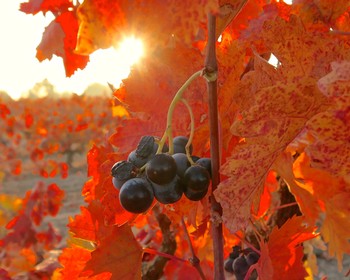
Second crop Zinfandel on Mokelumne River-Lodi's east side
"They show two things brilliantly: 1) What Lodi Zinfandel actually tastes like (something that has been somewhat obscured by winemaking for decades); and 2) The incredible diversity and complexity that different old-vine sites can lend to Zinfandel. In short, the wines are a revelation."
For precisely these reasons, you can say that today's top-drawer Lodi Zinfandels now demonstrates a sense of place adding up to a kinder, gentler, balanced style; and in a world where more and more consumers are appreciating kinder, gentler, more balanced wines in general, this makes Lodi Zinfandel more contemporary, even a height of fashion, than ever.
Lodi Zinfandel. #KeepingItReal.
Enjoy your National Zinfandel Day!
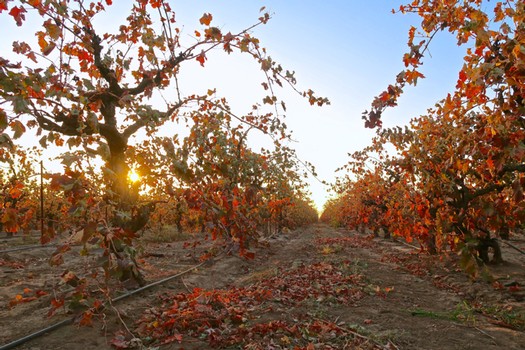
Vertical cordon-trained Zinfandel in Mokelumne River-Lodi's TruLux Vineyard